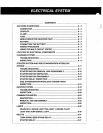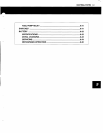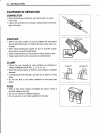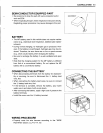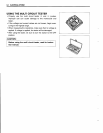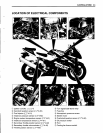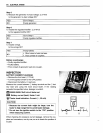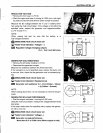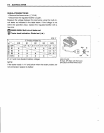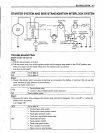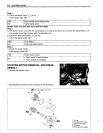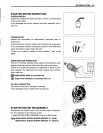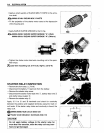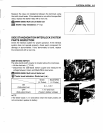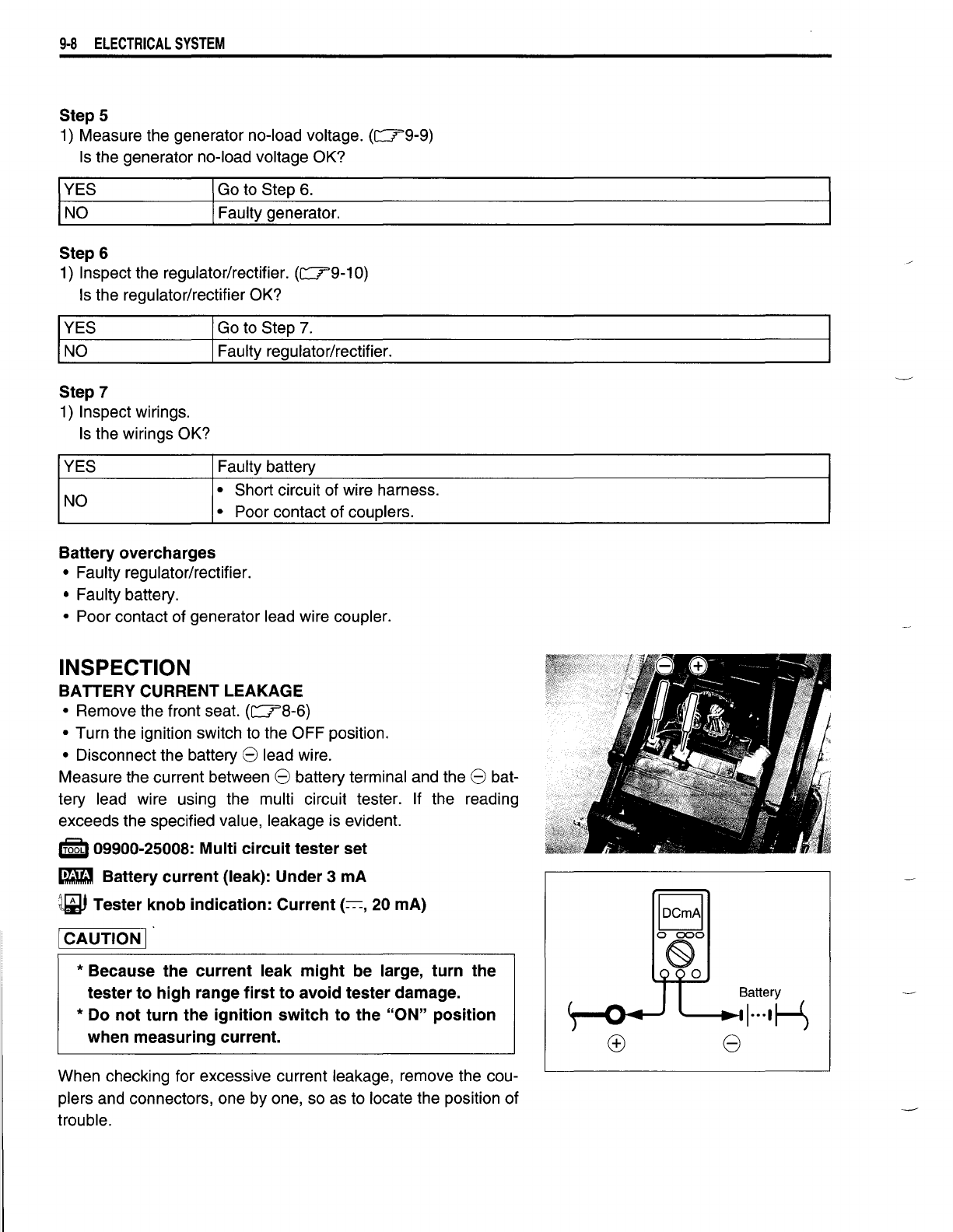
9-8
ELECTRICAL
SYSTEM
StepS
1) Measure the generator no-load voltage. (c:::79-9)
Is the generator no-load voltage OK?
I
YES
I_G_o_to_S_te...:-
p_6_.
-----------------------
NO
_F_a_ul....:ty;,-.g:::,.e_n_e_ra_t_o_r.
_
Step 6
1) Inspect the regulator/rectifier. (c:::79-10)
Is the regulator/rectifier OK?
YES Go to Step
7.
NO
Faulty regulator/rectifier.
Step 7
1) Inspect wirings.
Is the wirings OK?
YES Faulty battery
NO
• Short circuit of wire harness.
• Poor contact of couplers.
Battery overcharges
• Faulty regulator/rectifier.
• Faulty battery.
• Poor contact of generator lead wire coupler.
Battery
---~I···IH
8
* Because the current leak
might
be large, turn the
tester to high range
first
to avoid tester damage.
* Do
not
turn
the ignition
switch
to the
"ON"
position
when measuring current.
INSPECTION
BATTERY CURRENT LEAKAGE
• Remove the front seat. (c:::78-6)
• Turn the ignition switch to the OFF position.
• Disconnect the battery
8 lead wire.
Measure the current between
8 battery terminal and the 8 bat-
tery lead wire using the multi circuit tester. If the reading
exceeds the specified value, leakage is evident.
'MOt,
09900-25008: Multi
circuit
tester set
~
Battery current (leak): Under 3 mA
~
Tester knob indication: Current
(=-=-=,20
mAl
ICAUTION I
When checking for excessive current leakage, remove the cou-
plers and connectors, one by one, so as to locate the position of
trouble.



